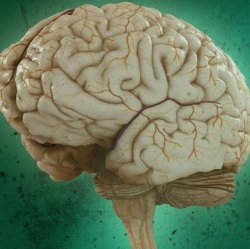
A device that delivers electrical shocks directly into the brain has been shown to alleviate symptoms in people with early stage Parkinson’s disease better than the best treatments being used today. Normally reserved as a last resort for patients with severe symptoms and for whom drugs are ineffective, the deep brain stimulation’s newly found effectiveness could promote it to the first line of attack against the disease at the earliest detection of symptoms.
The trial included 251 people diagnosed with Parkinson’s disease who were followed for two years at 21 centers in France and Germany. As a group, the participants had an average age of 52 years and had lived with the disease for an average of 7.5 years – a young group considering the general Parkinson’s population has an average age of 60. The participants were broken up into two groups: one receiving neurostimulation and the “best medical therapy” at their treatment center while the other group received only the best medical therapy. The stimulator was made by Minneapolis-based Medtronic.
Those that got neurostimulation therapy showed much greater improvement. The researchers attempted to assess changes to overall quality of life by measuring how the treatments affected daily activities such as speech, handwriting, dressing and walking, emotional well-being, stigma, bodily discomfort, social support, cognition and communication. Patients receiving neurostimulation improved in all of these categories except communication. Conversely, those who received medical therapy only improved in the daily activities and stigma, a measure of lacking social acceptance, categories. Another set of tests evaluating general motor skills also showed that people receiving neurostimultion performed better than those who were receiving medical therapy only.
